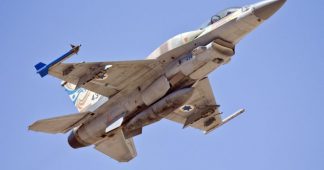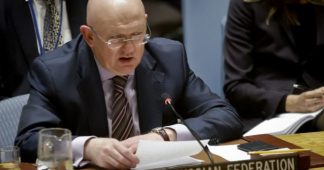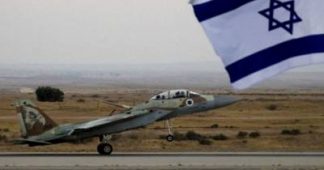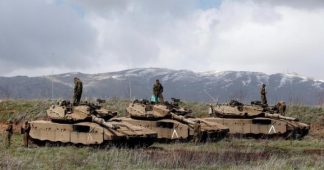01.07.2018
The Israeli military has reportedly drawn its “red lines” for the ongoing fighting between the Syrian government and militants along its northern border, ruling out a direct clash with pro-Assad forces and claiming that they alone must take over the conflict zone.
Tel Aviv urges Damascus to stick to the 1974 disengagement agreement, which provided for a buffer zone between the two countries, Israeli Prime Minister Benjamin Netanjahu said at a cabinet meeting on Sunday. He added he is “in continual contact” with the US and Russia on the situation in southern Syria, which is the site of clashes between pro-Assad forces and militant groups.
Netanyahu reaffirmed Israel’s committment to border security. He also promised that Tel Aviv would provide humanitarian assistance and wouldn’t take in refugees from the north.
The PM’s statement came the same day the Israeli army said it beefed up its presence near the Golan Heights border with Syria with tanks and artillery. The Israeli military also said it would stick to its policy of non-intervention in the Syrian conflict.
The IDF made the remark shortly after Haaretz said Israeli defense officials ruled out a direct confrontation between the IDF and the Syrian Army in the wake of a pro-government offensive against the al-Nusra Front and Daesh* terrorist groups in southwestern Syria near the border with Israel.
According to Israeli officials cited by the media outlet, pro-Assad forces must be the only ones to enter the conflict zone near Israel’s de facto northern border and take control over it when the strife is over, while Tel Aviv does not intend to allow other forces and armed groups to take over the area or join the Syrian army.
In a meeting between senior defense officials, Israel addressed an array of scenarios it would not tolerate from the Syrian troops or other forces in the area, the report says.
Israel is also keeping a close eye on the situation in the area, to verify which forces are affiliated with President Bashar al-Assad.
The report comes shortly after the IDF were put on high alert in the disputed Golan Heights, preparing for potential side-effects from the strife near the country’s northern border.
READ MORE: Israeli Army on High Alert in Golan Heights as Syria Intensifies Op in Daraa
The move was made following the Syrian army’s advances against insurgents during the ongoing aerial and ground-based anti-terrorist offensive the local government has launched in the territories near the border with Jordan and Israel. Tens of thousands of civilians living in the conflict zone began to flee towards the Israeli-held Golan Heights as the government forces pushed deeper into the area.
In response to a massive influx of Syrian asylum-seekers in Israel’s north, Defense Minister Avigdor Lieberman claimed that although Tel Aviv wouldn’t take in refugees, it was ready to provide humanitarian aid.
Israel’s annexation of the Golan Heights has been condemned by the international community, with the UN recognizing the Golan Heights as occupied Syrian territory.
In 2016, Benjamin Netanyahu declared that Tel Aviv would never return the Golan Heights to Damascus; the territory was annexed by Israel in 1981 after their seizure from Syria during the 1967 Six-Day War.
The Golan Heights buffer zone was created in line with the 1974 disengagement agreement which followed the 1973 Yom Kippur war, in which Syria failed to retake the disputed area.
*al-Nusra and Daesh (aka ISIS, IS, ISIL) are terrorist groups outlawed in Russia
Published at sputniknews.com











